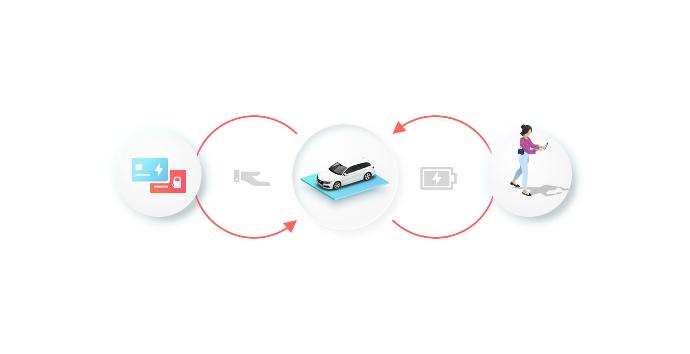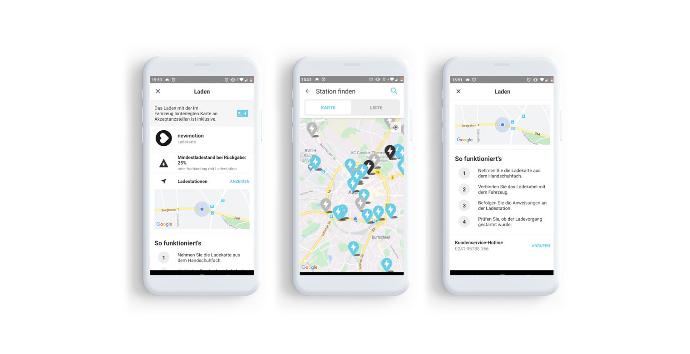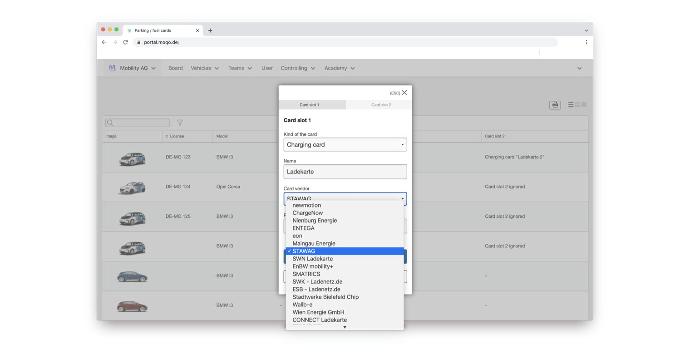To enable drivers to refuel or charge their vehicles, providers have two options: Either the users pay in advance and you subsequently reimburse them for the invoice amount. Or you, as the provider, deposit fuel or charging cards in the vehicles, which serve as a means of payment. Why the second option is better and how the cards work.
Why are Fuel and Charging Cards Useful?
One of the differences between carsharing and rental cars is that the cost of fuel or electricity is included in the carsharing rate. This means that drivers do not have to return the car with a full tank of gas or a full charge.
To ensure a smooth process, however, both providers and drivers rely on the vehicles being refueled or recharged in good time. If there are no cards with which drivers can pay at gas stations or charging stations, they must first advance the money out of their own pockets and then submit the bill. This effort reduces the willingness to fill up or charge a car if it is not urgently needed for one's own journey. It also discourages many from selecting and booking a car with a low filling level in the first place.
And for providers themselves, reimbursing invoices also involves a lot of accounting work. While your customers wait for their money, you have to check and sort incoming invoices and reimburse them individually. This is an effort that grows in proportion to the number of vehicles.
With charging or fuel cards, on the other hand, payment is made directly by you as the provider. Instead of invoicing individual drivers, you receive monthly collective invoices. This saves you time and relieves your customers of the question of whether they can manage this trip without a tedious refueling/loading process. Especially in combination with predefined minimum return levels, you can actively control refueling behavior.
Knowledge for Take Away
Our guide will help you stay on top of things as you build your sharing offering. Learn what matters and what you should think about.
How the Card System Works
To use a card system, start looking for potential issuers of fuel/charging cards. The cards should cover gas stations or charging stations represented in your business territory. Many cards apply to a group of gas stations, not just a single company.
Decide on a suitable card provider depending on availability and costs. There are small fees per card. However, some issuers offer discounts on fuel, for example. To increase the choice, you can also store several cards from different issuers in one vehicle. Whether a card is also valid abroad must be clarified individually.

You then store the card(s) in the cars via the telematics modules. This recognizes whether a card has been inserted. If it is not in its assigned place, drivers cannot return the car. This prevents misuse or theft.
At regular intervals, for example monthly, you will now receive an invoice from the card issuer for all transactions that have been settled with the card.
Refueling and Charging from the Driver's Perspective
As already mentioned, the app shows the fuel/charge level for each vehicle. Drivers can therefore assess before the journey whether this is sufficient or whether they may need to refuel. As a provider, you can also set a minimum level for the return.
If drivers need to refuel or recharge during or at the end of their journey, they receive instructions directly in the app. The charging station finder in the app shows them nearby charging stations. If a PIN code is required to pay with the card, the app also displays it.

Step-by-step instructions then guide drivers through the process. At the gas station, they fill up the car as usual, show the card at the cash register, enter the PIN if necessary, and finally insert the card back into the car. Most cards also require the current mileage to be entered after refueling. The app displays a corresponding input field for the mileage and PIN.
For electric cars, they first hold the card up to the charging station to unlock it. The next steps are then displayed there, such as connecting the power plug. Once the car is connected and the charging process has begun, the driver puts the card back and can now end the booking.
Tip
In addition to the instructions in the app, store a separate manual in the car where users can find answers to frequent questions about refueling or charging.

Conclusion: A Must for Successful Sharing Providers
By storing fuel/charging cards in your vehicles, you simplify charging and refueling for your users and improve the user experience. You also increase the efficiency of your internal processes, as you no longer have to refund numerous individual invoices, for example. The likelihood of errors decreases, while driver satisfaction increases.
For the successful and efficient operation of your shared mobility service, you need cards for refueling or charging. There are many card issuers from which you can choose the one that suits you best.




